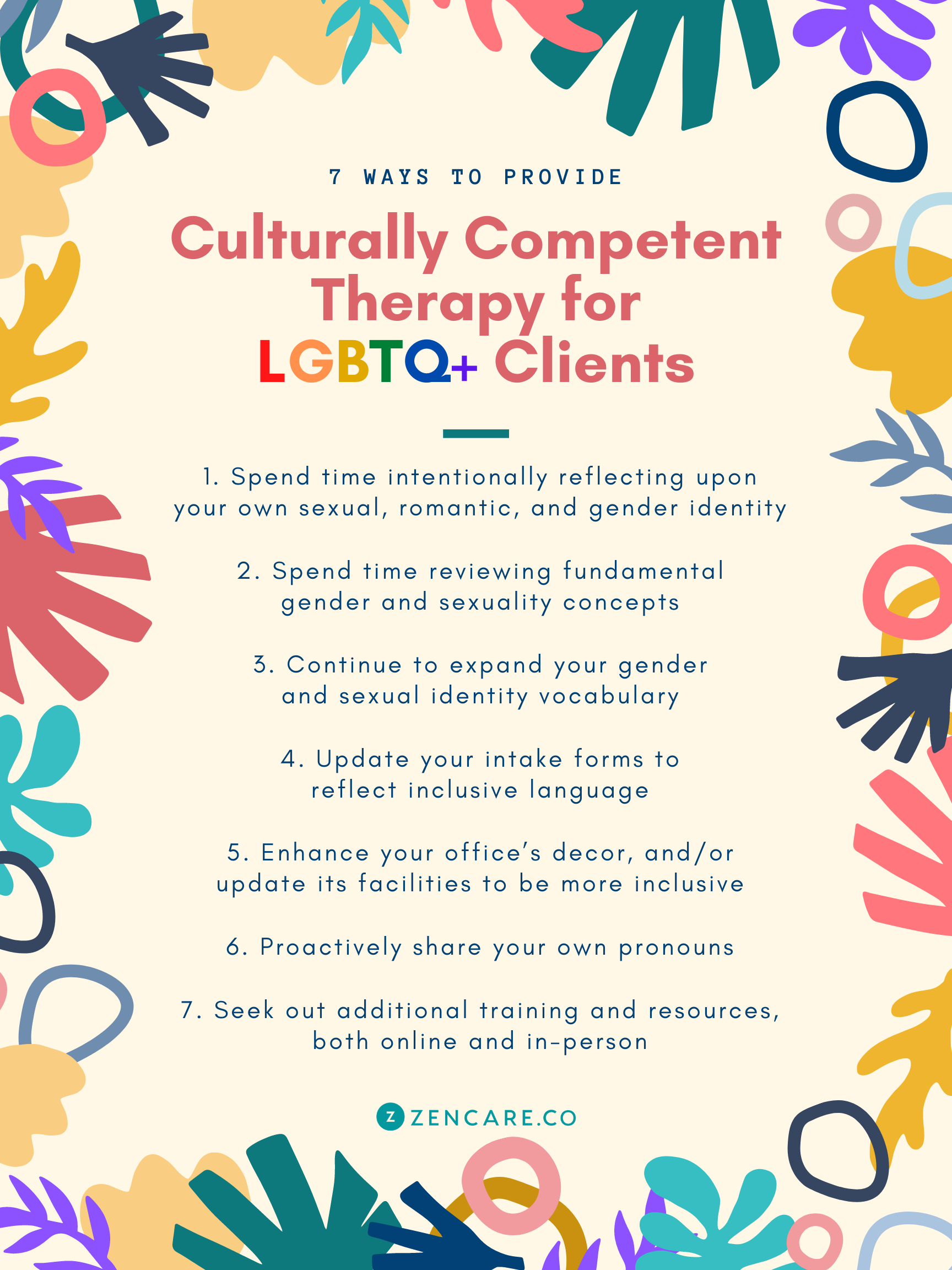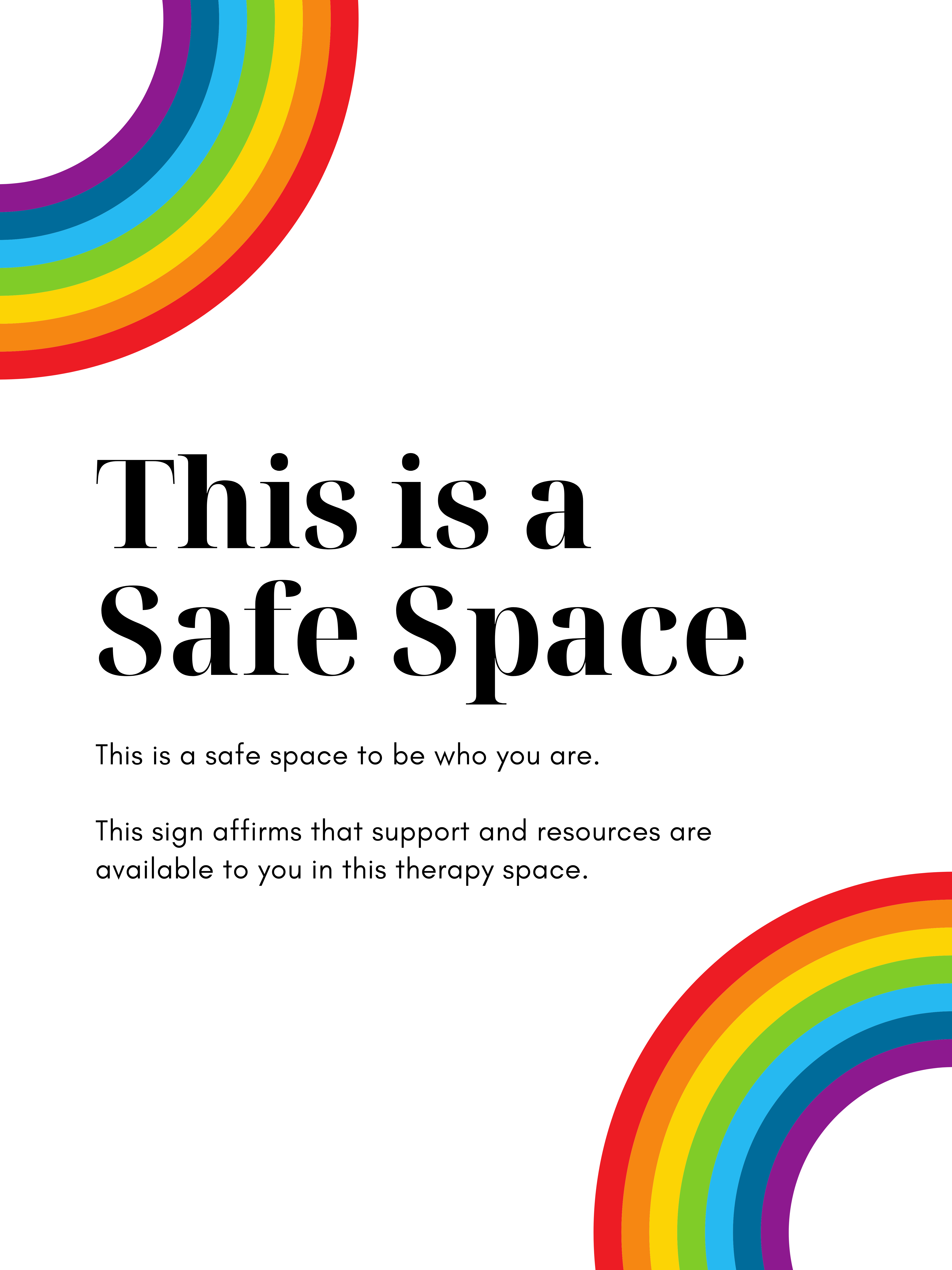As a private practice therapist, you already have a firm understanding of the importance of providing culturally competent care to the LGBTQ+ community. Your affirmative support is a critical element for clients in the queer community to feel accepted and make progress in the therapy room, just as a potentially non-affirming experience holds the power to thwart growth and cause feelings of isolation.
Learning to provide culturally competent care is an ongoing process, and one that continues to evolve with the times; at the end of the day, this effort is well worth it for the chance to stand as an ally and celebrate and recognize diversity among the LGBTQ+ community. Read on for seven ways you can provide culturally-competent care for members of the LGBTQ+ community – whether they're your own clients or the community at large.
1. Spend time intentionally reflecting upon your own sexual, romantic, and gender identity
The first step to providing LGBTQ+ affirming care is a nuanced one: it's to conduct some “soul searching” about your own gender and/or sexual identity.
Due to social norms and constraints, queer and trans folks are typically compelled to examine their gender and sexual/romantic identities far more often than people who identify as straight and cisgender. This discrepancy in self-reflection can be a primary barrier for therapists to understand and provide affirming, competent care to LGBTQ+ clients.
Much as race, economic status, ability, and other aspects of the clinician’s identity are present and influential in the therapeutic relationship, so too are the provider’s gender and sexual/romantic identities.
Particularly for clinicians who identify as straight and/or cisgender, simply spending intentional time observing your identities as worthy of questioning can help develop a foundation of empathy and inclusivity for queer and trans clients.

2. Spend time reviewing fundamental gender and sexuality concepts
Cultural competency is rooted in knowledge. When working with clients from the LGBTQ+ population, make sure you’re not only up to date on fundamental concepts related to gender and sexuality, but you’re also fluent in them. The following are key points to get you started:
- Sexual & romantic identity — Describes who we are sexually attracted to based on others’ and our own gender identities. For example, if you are a cisgender man who is attracted sexually to women, you may identify as heterosexual. If you are attracted to people of both male and female identity, or more than one gender, you may identify as bisexual.
- Romantic identity — Describes who we are romantically attracted to based on others' and our own gender identities. If you are attracted romantically to people of the same gender identity as you, you may identify as homoromantic.
- Sexual fluidity — The understanding that sexual identity, attraction, and behavior can change within individuals over time and across situations.
- Sex — Biological designation as male, female, or intersex based on genitalia, chromosomes, hormones, and other primary sex characteristics. Typically assigned at birth.
- Gender identity — An individual’s internal sense of themselves, often defined in relation to maleness and femaleness, but in reality can be any combination of these dimensions, something in between, or something else entirely.
- Gender expression — Ways in which we display our gender identity, through demeanor, clothing, hair, or other aspects of behavior. For example, a client might identify as a cisgender man, wear clothing bought from the “women’s section” at a store, and paint his nails.
- Gender binary — The widely held assumption that gender is dichotomous, i.e., includes only male and female.
- Trans-inclusive feminism — A gender justice movement that includes and honors the lives and experiences of trans and non-binary individuals.
You may wish to further research these topics, and possibly discuss with colleagues where appropriate.
3. Continue to expand your gender and sexual identity vocabulary
Gender and sexuality concepts are only part of the story. Diversity in gender and sexual/romantic identity is another.
Some identities your clients might have include:
- Queer — Often used as an umbrella term to describe having any sexual identity other than heterosexual.
- Pansexual — Attraction to people across the gender spectrum.
- Asexual — Lack of sexual attraction or interest toward others; can still have romantic attraction.
- Aromantic — Lack of romantic attraction or interest toward others; can still have sexual attraction.
- Trans*, Genderqueer, Gender nonconforming — Often used as umbrella terms to describe a gender identity that does not adhere to the gender binary or assigned sex at birth.
- Agender — Lack of identification with gender.
As with any research you conduct as a provider, it's crucial to remember that behind these labels are people, full of complexity and humanity.
4. Update your intake forms to reflect inclusive language
There are many ways to make sure your clients feel comfortable both before and during session. In intake forms, consider including some of the following voluntary questions:
- Affirmed Name — The client’s affirmed or chosen name
- Pronouns — Clients can fill in the blank
- Gender identity — You can include a broad list of identities (such as female, male, transgender male/trans man, transgender female/trans woman, genderqueer), or make this an open response question
- Sexual/romantic identity — Same as above
- Sex assigned at birth — F/M/I (female / male / intersex)
Note that this is not an exhaustive list, and when determining which questions to include, it can be helpful to ask yourself, "Is this information about my client relevant to our therapeutic work?"
You can ask for the client’s legal name, which may be needed for insurance, billing, or other purposes. However, this could be listed after the client’s affirmed name, which conveys the importance of the client’s chosen name for the therapeutic relationship.
5. Enhance your office’s decor and update its facilities to be inclusive
It can also be helpful for clients’ identities and needs to be reflected in the physical space of therapy.
Ask yourself, what small but impactful changes can you make to your office to make it more inclusive? For example:
- Gender neutral bathrooms — If your office has a bathroom, is it accessible to all genders, or is it designated by the gender binary?
- Safe Space poster — Do you have a safe space poster on your wall?
- Pronouns on teletherapy platform — Does your name on your teletherapy platform (your "virtual office") indicate your pronouns (e.g. "Jane Smith (she/her/hers)")?
Put yourself in your clients’ shoes so you can spot other opportunities to make them feel welcome.
6. Proactively share your own pronouns – online and in-person
Proactively sharing your pronouns is a powerful tool for cisgender allies to foster safety by normalizing accurate pronoun usage, without assumptions.
Consider adding your pronouns to:
- Your online profiles (here's how to add pronouns to your Zencare profile!)
- Email signature
- Social media
- Teletherapy accounts
- Business cards
- Any name tags you write
Adding your pronouns is a sign of mutual respect for both clients and colleagues, and sets the tone for an inclusive environment.
Related:
- One Therapist’s Outlook & Advice for Disclosing Queer Identity in Therapy
- Benefit, Downsides, & Honest Advice for Self-Disclosing Queer Identity as a Therapist
7. Seek out additional training and resources, both online and in-person
There are many, many people and organizations working to educate the public about gender and sexual diversity! Take advantage of these resources, and share them with your colleagues.
Below is a short list of resources to get you started:
- SafeZone Project
- The Trevor Project
- Human Rights Campaign
- The Gender Book
- Gender Dysphoria Affirmative Working Group
You can also do research for organizations in your area, or ask colleagues for recommendations.
Your office is a haven for clients, including members of the LGBTQ+ community. By taking these small but impactful steps, you can convey the message – without having to explicitly, verbally state it! – that all aspects of their identity are not only accepted, but also respected and warmly welcomed.

